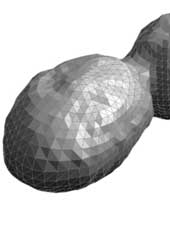Back to all publications...
Using Bayesian Optimization to Find Asteroids' Pole Directions
Near-Earth asteroids (NEAs) are being discovered much faster than their shapes and other physical properties can be characterized in detail. One of the best ways to spatially resolve NEAs from the ground is with planetary radar observations. Radar echoes can be decoded in round-trip travel time and frequency to produce two-dimensional delay-Doppler images of the asteroid. Given a series of such images acquired over the course of the asteroid’s rotation, one can search for the shape and other physical properties that best match the observations. However, reconstructing asteroid shapes from radar data is, like many inverse problems, a computationally intensive task. Shape modeling also requires extensive human oversight to ensure that the fitting process is finding physically reasonable results. In this paper we use Bayesian optimisation for this difficult task.
Marshall, Sean, Cobb, Adam, Raïssi, Chedy, Yarin Gal, Rozek, Agata, Busch, Michael W., Young, Grace, McGlasson, Riley
American Astronomical Society (AAS), 2018
[Citation] [BibTex]

